Wetsuit vs drysuit - Which is best for stand up paddle boarding?
Wetsuit vs drysuit are two types of garments worn by water sports enthusiasts to protect themselves from the cold and other environmental factors.
Wetsuits are made from neoprene or graphene material and are designed to provide thermal insulation by trapping a thin layer of water between the user's skin and the suit. This layer of water is warmed by the user's body heat, creating a protective layer that helps to keep the user warm.
Drysuits, on the other hand, are designed to keep the user completely dry by preventing any water from coming into contact with the skin. They are made from waterproof materials and are often worn in cold water environments where hypothermia is a concern. While wetsuits are more versatile and can be worn in a wider range of water temperatures, drysuits provide superior protection in extreme cold water environments. Ultimately, the choice between a wetsuit and a drysuit depends on the user's specific needs and the conditions in which they will be using the garment.
The following temperature chart is created by and for oneill.com. Be reminded that all temperature charts are a general guideline. There are multiple factors that determine neoprene thickness on the water. See more information at https://uk.oneill.com/blogs/all/wetsuit-thickness
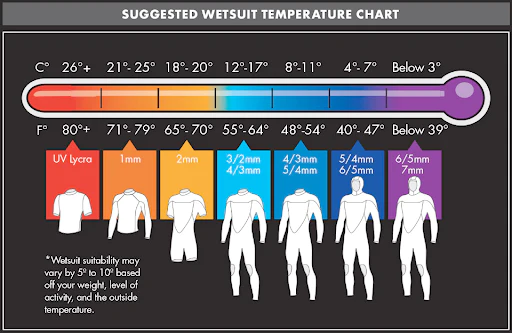
Graphene - advanced material
Graphene is an advanced material that has recently been incorporated into wetsuits to enhance their thermal properties and durability. Graphene is a form of carbon that is incredibly strong, lightweight, and has excellent thermal conductivity. When added to wetsuit construction, graphene-based materials provide better insulation and protection from the cold, while also making the wetsuit thinner and lighter.
Wetsuits made with graphene-based materials are designed to trap a thin layer of water between the user's skin and the suit. This layer of water is warmed by the user's body heat, creating a protective layer that helps to keep the user warm. The graphene layer helps to insulate the body by preventing heat loss, while also wicking moisture away from the skin to keep the user dry and comfortable.
Graphene wetsuits are also more durable than traditional wetsuits. Graphene is an incredibly strong material that can withstand wear and tear better than neoprene, which is the material used in most wetsuits. This means that graphene wetsuits can last longer, reducing the need for frequent replacements and ultimately reducing waste.
Overall, the use of graphene in wetsuits is an exciting innovation in wetsuit technology. By incorporating advanced materials into wetsuit construction, manufacturers are creating wetsuits that are lighter, warmer, and more durable than ever before. Graphene wetsuits are a great option for water sports enthusiasts who are looking for a high-performance wetsuit that provides superior thermal insulation and protection from the cold.
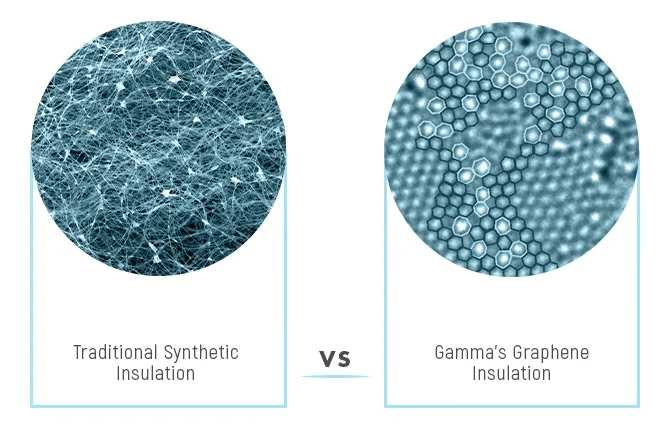
More on Wetsuit vs drysuit
- Water temperature: The temperature of the water you will be paddling in is a key factor in determining whether to wear a wetsuit or drysuit. In general, wetsuits are better suited for milder temperatures, while drysuits are ideal for extremely cold water.
- Mobility: Both wetsuits and drysuits can restrict movement to some extent, but wetsuits are generally more flexible and offer better mobility. Drysuits, on the other hand, can be bulkier and less flexible, but they provide better protection against the cold and wet conditions.
- Water exposure: If you are paddling in conditions where you are likely to get wet, such as in rough seas or heavy rain, a drysuit is a better option as it provides a watertight seal that keeps you dry. Wetsuits, on the other hand, are designed to allow a small amount of water to enter and warm up against your body, providing insulation and warmth.
- Duration of paddling: The length of time you will be on the water is another factor to consider when deciding between a wetsuit and drysuit. For shorter sessions, a wetsuit can be a more convenient option, as it is easier to put on and take off quickly. For longer paddling sessions, a drysuit is a better option, as it can provide more insulation and protection against the cold and wet conditions.
Ultimately, the decision between a wetsuit vs drysuit for SUP will depend on the specific conditions and personal preference. It's important to choose a suit that provides enough warmth and protection for the water temperature and conditions, while still allowing for comfortable movement on the board.
- Neoprene Construction: Neoprene is the primary material used in wetsuit construction due to its excellent insulating properties and flexibility. Paddle boarding wetsuits typically utilize high-quality neoprene that provides warmth while allowing for a full range of motion.
- Seam Construction: Wetsuit seams can impact comfort and water resistance. Many paddle boarding wetsuits feature glued and blind-stitched seams (GBS) or sealed seams to minimize water entry and increase durability. Some advanced wetsuits may even have seamless construction for maximum comfort.
- Thickness and Insulation: Paddle boarding wetsuits come in various thicknesses to suit different water temperatures and personal preferences. Thicker suits provide more insulation and are suitable for colder conditions, while thinner suits offer greater flexibility and are ideal for warmer waters.
- Zipper Systems: Wetsuits may feature different zipper configurations, such as back zippers, chest zippers, or zip-free designs. Chest-zip wetsuits, in particular, are popular for paddle boarding as they minimize water entry and increase flexibility compared to traditional back-zip styles.
- Mesh Panels and Vents: Some paddle boarding wetsuits incorporate mesh panels or vents in strategic areas to enhance breathability and regulate body temperature. These features help prevent overheating during intense paddling sessions or in warmer weather conditions.
- Abrasion-resistant Panels: Areas prone to wear and tear, such as the knees and elbows, may have reinforced panels or durable coatings to increase longevity and protect against abrasion from the board or other surfaces.
- UPF Protection: In addition to providing insulation and water resistance, some paddle boarding wetsuits offer built-in UPF (Ultraviolet Protection Factor) to shield the skin from harmful UV radiation during prolonged exposure to sunlight.
- Hybrid Designs: Hybrid wetsuits combine features of wetsuits and rash guards to provide targeted warmth and protection where needed while maximizing breathability and flexibility in other areas. These suits are popular among paddle boarders who want versatility for various weather conditions.
- Tailored Fit and Sizing: Many wetsuit brands offer a range of sizes and fit options to ensure paddlers can find a suit that fits snugly and comfortably, minimizing water flushing and maximizing warmth.
- Environmental Considerations: Some manufacturers prioritize sustainability by using eco-friendly neoprene alternatives, incorporating recycled materials, or implementing environmentally conscious production practices.
BLUEFIN
https://bluefinsupboards.com/
See full review of the affordable Bluefin Sprint here: https://www.standuppaddleboardingguide.com/sup-gear-reviews-paddle-boards.html
A wetsuit vs drysuit will be an obvious decision for some conditions. There is always natures unpredictable weather factor to consider. In any case think safety first.
Wetsuits by Patagonia – R1 Lite Yulex
Thermal Protection Test – floatation and thermal protection
The following video shows safety apparel and its effectiveness in cold water immersion environments. Narrated by Gordon Giesbrecht Ph.D.
The following chart must be used as a guideline only. There are multiple factors to determine what you should ware for warmth/pertection.
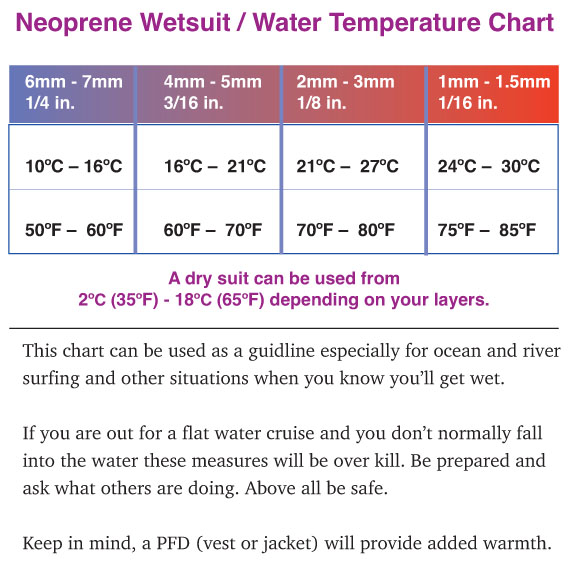
WETSUIT
Key points:
- Not waterproof
- Designed for warmth
- Has give and fits snug
Wet suits are made of a rubber neoprene. They are designed to keep you warm, especially if wet. A proper fit is key to experiencing the warmth your wetsuit is rated for. It's not waterproof, so a loose fit will let too much water in and cause chills. A skin-tight fit it what you’re looking for. If it becomes wet, your body temperature will warm the water absorbed by the neoprene to keep you warm.
There is no need to wear clothing underneath, although depending on temperature you may want to wear a thin layer such as a swim suit, or a full thin liner if paddling in very cold weather.
Paddlers’ wetsuits are generally 2 to 3 mm thick. There are full-length suits that cover your entire body and may include booties, or shorty suits that are typically cut above the knee and to the elbow for warmer weather. If you are paddling in extreme weather you might consider a getting a thicker suit such as can be found at a dive shop. It’s always a good idea to ask other boarders what they’re wearing for a particular situation.
The following link gives insight on the dangers of cold weather paddle boarding. This post is written by a …hardcore winter waterspouts dude… http://www.sup-talk.co.nz/
7Till8 Wetsuits
Imagine a custom made suit with high grade materials: a glimpse of the new line of custom suits and cutting edge way to order. Made of Yamamoto rubber, polypropylene, and smooth jersey. Check them out at www.7till8.com
How to clean and deodorize neoprene wetshoes
Neoprene doesn't breath so your neoprene wetshoes can begin to acquire foot odour over time. The following video gives some solutions for how to maintain and keep your wetshoes as fresh as possible.
DRYSUIT
Key points:
- Water proof
- "Shell" style not designed for warmth if used alone
- Fits with enough room for layers to add warmth
A drysuit is made of waterproof material (various materials are used). It is basically a shell with seals at the neck and wrists to keep the water out, and the boot is built in. These suits are not designed for warmth, so you need to consider the temperature the drysuit is rated for and layer underneath to address weather conditions. The typical suit is designed with divers and kayakers in mind, but is widely used by SUPers and works well. Some drysuit manufacturers are beginning to design specifically for stand up paddlers: lightweight, good fit, and with room for thermal layers for cold days.
More in-depth details on drysuits:
www.kayakacademy.com/pages/drysuitfaq.html
SUP specific drysuit –"Surf Dry" Jacket
In 2012 a company in Victoria, B.C. Canada (OceanRodeo.com) designed the first drysuit specifically for paddle boarders called the "Soul". Today they offer the "Heat", "Soul" and "Ignite". These suits are unisex in style and come in a range of sizes. See reviews at the following link.
Ocean Rodeo Igniteback to SUP accessories and gear
Home – where it all started
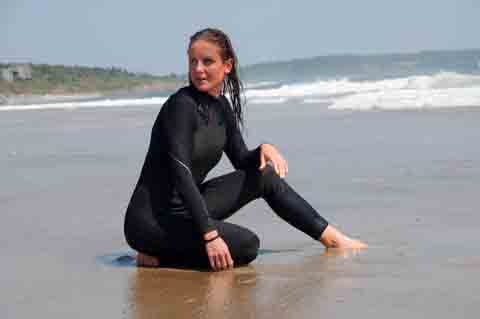
This website is for sale. For information go to:
Buy-standuppaddleboardingguide.html
DuckDuckGo Search
2014 - Most recent Review - Shark 2s
Amazon devicesSee BLUEFIN SUP Fleet
5 year warranty,
60 day returns.
Free global shipping!
Learn more about Bluefin Sup inflatables
Dear Visitors
Should you click on an ad, it make generate a small commission at no cost to you. It helps keep our website free for all users. MANY THANKS!
O'Neil Wetsuit
https://amzn.to/3wekRsh
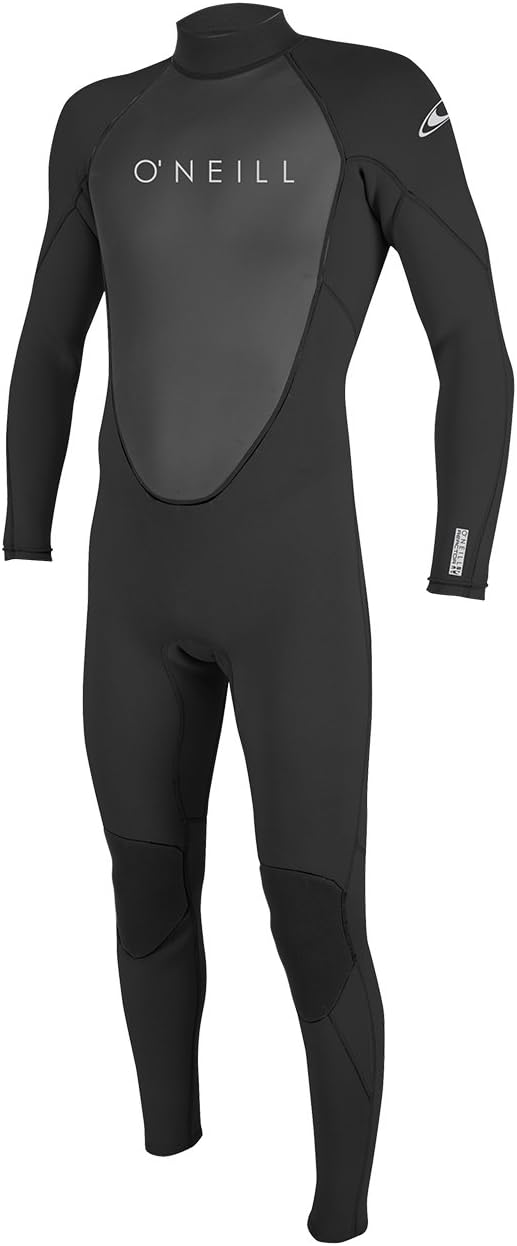
Drysuits, wetsuits and rash guards. You may need all three depending on your paddleboarding preferences.
This forum gives further insight on cold weather paddling and wetsuit vs drysuit:
standupzone
SURFSTOW SUP Handle:
This handle is a mainstay in my deck bag. If poor conditions force me off the water, I can walk back carrying my board with ease. Its SUPER SUCK feature has never failed (apply on a dry surface).
Find out more at the following link:
Surfstow SUP grip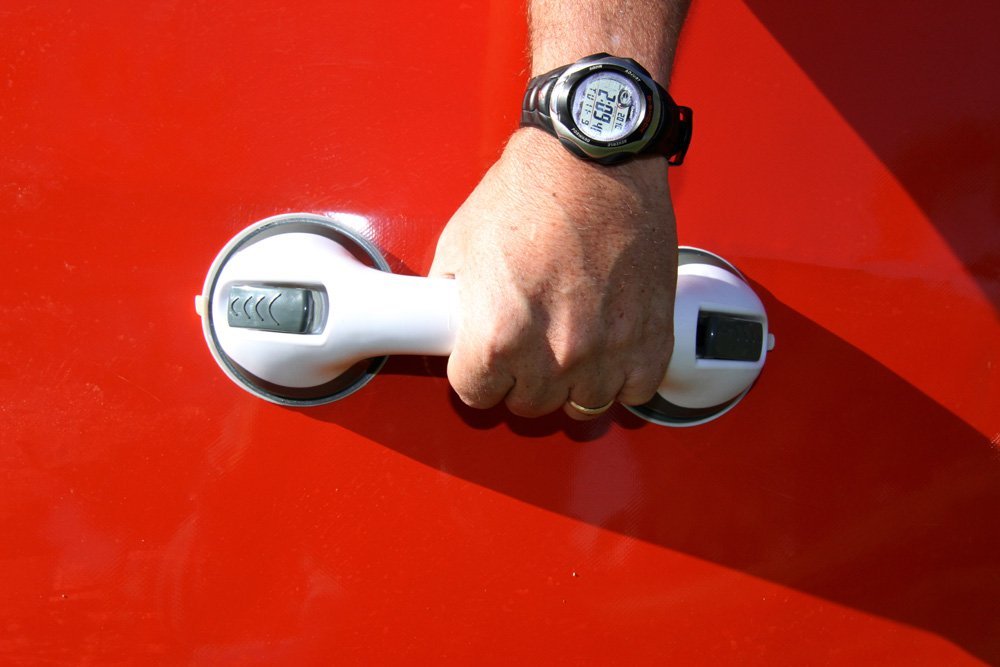
full review go to: SUP gear reviews
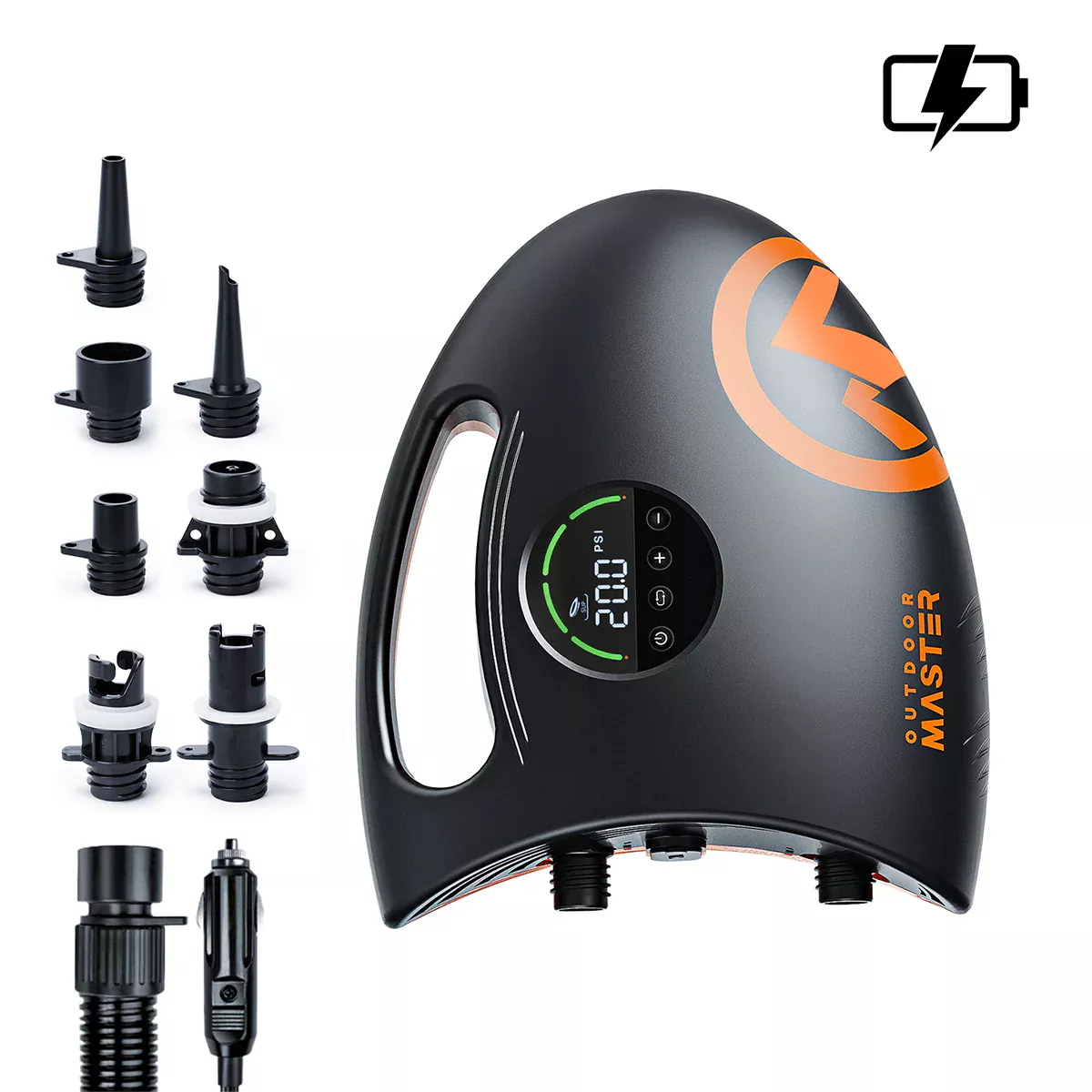
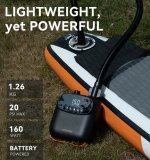
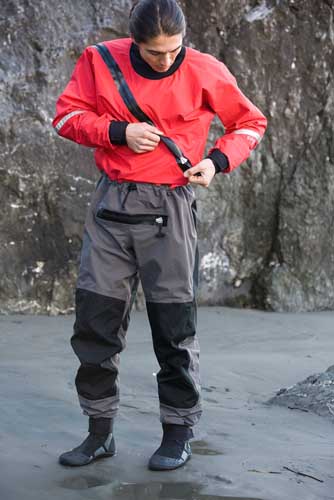
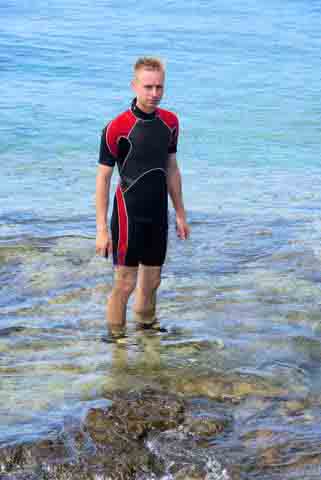
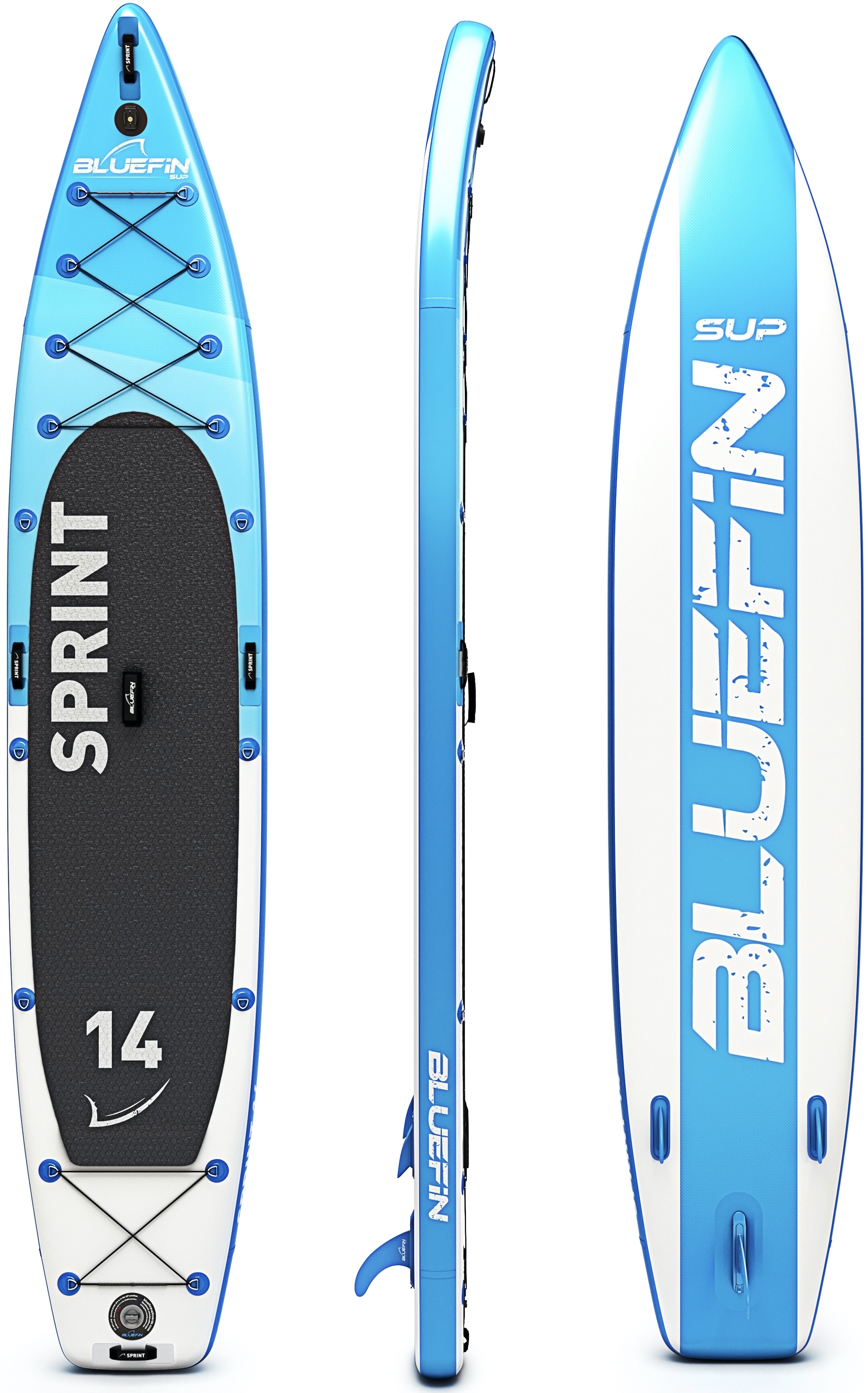
New! Comments
Have your say about what you just read! Your paddle boarding comments, stories and ideas are valued! Many thanks!